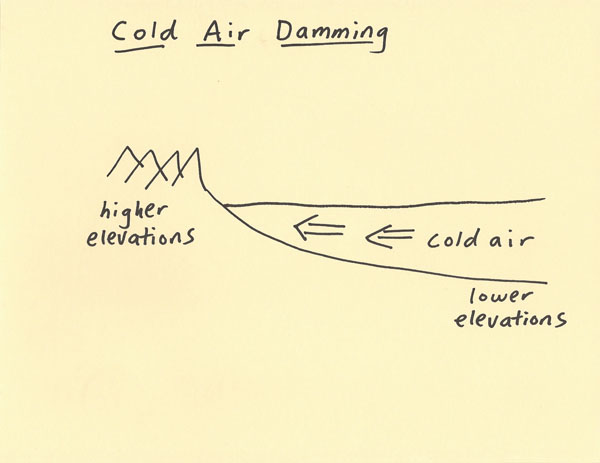
METEOROLOGIST JEFF HABY
Cold air damming is a process in which cold air becomes trapped by higher elevations. Water being trapped behind a river dam is an analogy. The
dense water is not able to go over the dam and is thus trapped behind it. In a cold air damming situation, the cold air is denser and thus
sinks to the lowest elevation it can flow toward. The momentum and depth of the cold air helps determine how much it will climb
into higher elevations. In a cold air damming situation, the cold air tends to be shallow enough with a slow enough momentum that
it is trapped from going over high elevation regions. Higher elevation regions such as the Appalachian Mountains and Rocky Mountains
can trap shallow relatively low momentum cold air from flowing into the higher elevation mountains. This situation can cause the
reverse of the typical temperature regime. Typically temperatures decrease with height but in a cold air damming situation the
coldest air can be at the lower elevations which warmer air in the higher elevations. Cold air damming has important meteorological
implications such as helping to promote winter weather precipitation in the lower elevations and causing the weather to be much
different as a function of elevation. The diagram below shows cold air moving toward higher elevation mountains
and becoming dammed by the mountains.

|
|
|

